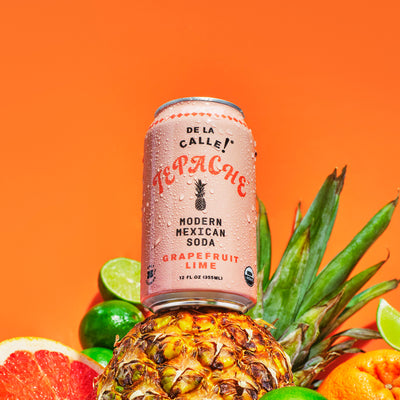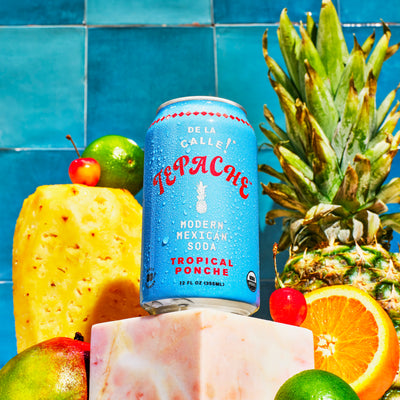Let’s Take a Look at Mexican Food Culture Through the Ages

Mexico has a long and rich culinary history that began long before the land we call Mexico was colonized by the Spanish. In this article, we’ll take a look at Mexican food culture through the ages that shaped the diverse, delicious cuisine we associate with Mexico today.
Overview
There are three main influences on Mexican cuisine as we know it: the Mayans, the Aztecs, and the Spanish. Before we dive into the cuisine though, let’s take a brief look at a timeline of pre-Mexican and Mexican history.
Timeline
1500 B.C. - The Olmecs form the first large Mesoamerican civilization in the southern region of Mexico. During this time, crops that are still important in Mexican cuisine today are cultivated such as maize (corn), beans, and chile peppers.
250 C.E. - The Mayan civilization gains prominence in the region known as Mexico today. They are centered in the Yucatán peninsula but have a large influence all over Mesoamerica, including an important alliance with the commercial civilization based in Teotihuacán.
900 C.E. - The Toltec seize power as the Mayan civilization begins to dwindle in the reign. Their military might allows them to rise to power in the 10th century and establish their empire in what is now today central Mexico.
1325 C.E. - The Aztecs found their civilization in Tenochtitlán and gradually form alliances with neighboring city-states to consolidate their power. They create an intricate and advanced society, and their language, Nahuatl, becomes the dominant language of Mexico by the 1350s.
February 1517 - Francisco Hernández de Córdoba becomes the first European to set foot on Meixcan soil. When half of his exploring party is killed, he tells the Spanish governor in Cuba to send a larger group of men to Mexico.
February 1519 - Hernán Cortés sails for Mexico with almost 500 soldiers. They seize the town of Tabasco and later establish the city of Veracruz. He forms an alliance with the Tlaxcalans, powerful Aztec enemies, and sets his sights on overthrowing the Aztec empire.
August 13, 1521 - Cortés defeats the Aztec empire and builds Mexico City on the ruins of Tenochtitlán.
The Mayan Influence
The Mayans were a largely nomadic civilization whose cuisine had a great influence on the history of Mexican food culture.
One staple of Mayan cuisine was corn, which was one of the few foods that was farmed on a large-scale. In fact, we have the Mayans to thank for inventing the earliest form of the tortilla, a food that is central to Mexican cuisine today. The Mayans often ate tortillas with a paste made from beans given that meat was scarce in the region where they lived.
Although corn and beans were staples, given that the Mayans were hunters and gatherers, they also acquired wild game, tropical fruit, and fish, which added variety and flavor to their cuisine.
Another important food in Mayan cuisine was chocolate, which was considered a gift from the gods that had medicinal and mystical properties, although the Olmecs are believed to be the original makers of chocolate.
The Aztec Influence
Several foods and ingredients that were invented and cultivated by the Mayans remained popular during the Aztec Empire. However, they added salt, peppers, and domesticated game such as turkey and duck to their diet. In fact, salt and chili peppers were so central to Aztec cuisine that it was considered fasting if one abstained from eating these two ingredients.
The Spanish Influence
When the Spanish overthrew the Aztec Empire, they brought with them their own dishes, ingredients, and cooking methods. Notably, they brought new livestock such as sheep, pigs, goats, and cows which introduced a whole new array of dishes and a reliable source of protein. The introduction of this livestock also led to the introduction of new dairy products, specifically cheese which became a prominent part of the cuisine.
They also brought garlic, olive oil, cinnamon, coriander, and rice, many of which are still cornerstones of Mexican cuisine. Apart from traditional Spanish cuisine, the invasion of Mexico by the Spaniards also led to the assimilation of foods and ingredients from other Spanish colonies and trading partners. Some of these cuisines included Caribbean, French, Portuguese, and West African cuisines.
The American Influence
When Spain invaded Mexico, they also invaded the land that is now Texas. For the next two centuries, the Spanish colonized the region in which Native Americans were living, which led to an amalgamation of the two cultures. When Mexico gained their independence, Texas was still a part of their territory. It seceded from Mexico in 1836 and became a part of the United States in 1845.
Being a state meant that new foods were available in Texas such as beef, wheat, cheddar cheese, and cumin. Tejanos, the name for people of Mexican descent living in Texas, incorporated these new foods into traditional Mexican dishes. Eventually, this new variation of Mexican food gained popularity and was coined Tex-Mex cuisine. Some foods distinct to Tex-Mex cuisine are wheat tortillas, burritos, and nachos.
Traditional Mexican Dishes, and Drinks
Tamales
The tamales that we love today have their origins in ancient Mayan culture. Tamales were made using the husk of the corn to ferment and cook the ingredients inside which often contained a mixture of meat and vegetables wrapped in corn dough.
Given that tamales are incredibly easy to transport, they were often traded for valuable items and served at holiday celebrations. We know that the tamale has its origins in Mayan society because several art pieces depict Mayan people using tamales as offerings to the gods.
Tepache
Tepache is a traditional drink that dates back to pre-Columbian Mexico. Although it is made from fermented pineapple today, it was originally made from corn. There is some dispute about the history of tepache because the recipe was passed down orally for several generations, but it is believed that the Mayans used tepache during religious ceremonies.
Mole
The word mole comes from the Nahuatl word mōlli, which roughly translates to “sauce.” Mole is a complex sauce made from a blend of dried chiles, fruits, and several spices. Although there are many variations of mole, arguably the most famous is mole poblano, which gets its distinct flavor from chilies and cocoa.
Although the origins of mole are highly disputed, much like those of tepache, one story claims that the dish was first made as part of a welcome ceremony that Moctezuma, the Aztec emperor, held for Hernan Cortés.
Guacamole
If you’re thinking now that the word guacamole bears a striking resemblance to mole, you’re right! Guacamole is another delicacy that is attributed to the Aztecs. The word guacamole comes from the Nahuatl word ahuaca-muli which translates to “avocado sauce.” Although the original, Aztec guacamole only contained avocados, tomatoes, and chilis, the Spaniards added ingredients that we now think of as crucial to guacamole such as onions, cilantro, and lime juice.
Salsa
Salsa, which comes from the Spanish word for “sauce,” was first sold in the Aztec marketplaces, some of which could attract around 50,000 people. Surprisingly, the core ingredients of salsa including, tomatoes, tomatillo, chipotle, and avocado, have remained the same.
Conclusion
The history of Mexican cuisine is ancient and forever evolving. Although the Mayan and Aztec empires and the Spanish can take the majority of the credit for the delicious food we associate with Mexico today, you can find influences from cultures all over the world in Mexican food which is what makes it so complex and so tasty!
Sources:
https://www.chocolate.org/blogs/chocolate-blog/a-brief-history-of-chocolate











